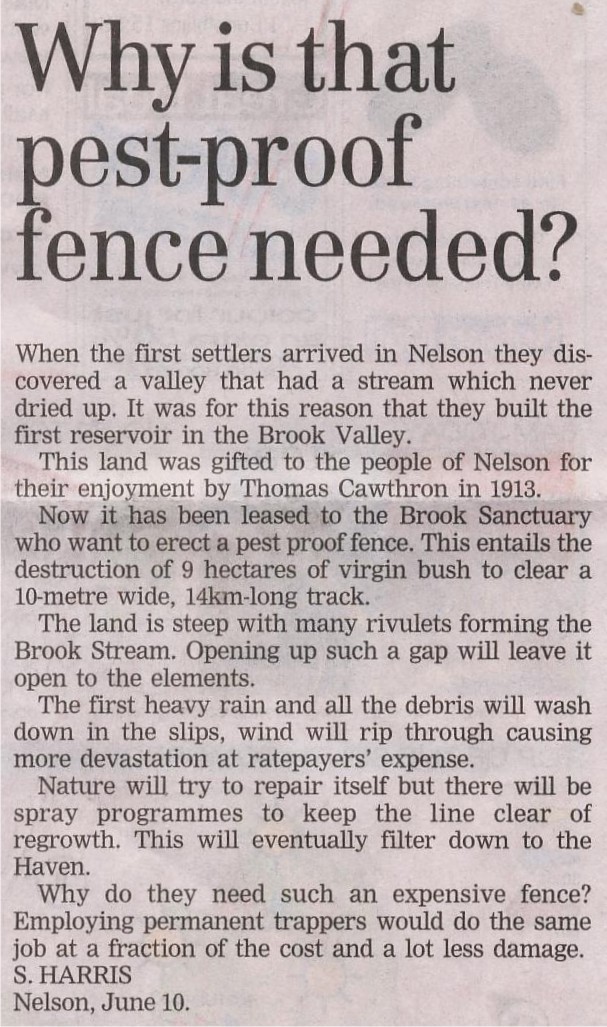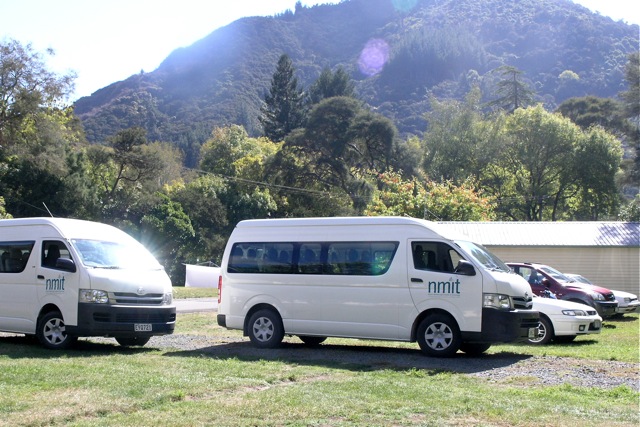
This cartoon illustrates well one of many reasons I believe a poison free sanctuary has more to offer the conservation community than does the current approach.
Pest control in New Zealand is undoubtedly a challenging affair. There are certain realities it would be helpful to admit and accept in moving forward with the sanctuary vision that are not currently being addressed.
- even with pest proof ( or more accurately pest resistant fencing ) the complete exclusion of mice and rodents cannot be guaranteed. See;
- Known adverse effects:
- It is well understood that Brodifacoum causes adverse effects in native bird populations through secondary poisoning. It is highly persistent within the environment and within tissues of poisoned animals. This presents a threat to predatory and scavenging birds especially. As Brodifacoum is a slow acting poison, prey species such as rodents can be active and without symptoms for days to weeks after consuming baits.
- While invertebrates are not susceptible to poisoning they have been shown to retain poison residues for some time after bait application. This poses a risk of secondary poisoning to insectivorous and omnivorous bird species also.
- Reptiles can also be susceptible to Brodifacoum, with skinks having been found dead with significant Brodifacoum residues. The Brook Sanctuary is home to a number of lizard species including the rare nelson gecko.
- While this programme may have the “additional benefits in reducing possums, rabbits, deer, goats and pigs” it is designed for the eradication of rodents specifically. The removal of other “unwanted mammalian species…. Are covered in a seperate plan”
- The extent of toxicity is not debated. The justification is that adverse effects on native wildlife will be “minor and temporary in nature”
With the sanctuary providing a home to rare species such as the nelson gecko and the NZ falcon, it should be considered wether the loss of any of these individuals can really considered minor.
There are many instances within the application report that discuss how the effects of Brodifacoum on ecosystems are not readily understood, and that further research is required. Such required research remains impossible when the strategy of every NZ conservation project mimics the others. By providing a toxin free environment, the sanctuary trust would have the opportunity to invite comparative research from all around the country.
For example, Stephenson, B. M; Minot, E. O. 2006. Breeding Biology of morepork, discusses how breeding success of morepork was lower in the year following Brodifacoum application, but cannot conclude if this was due to adverse effects from the poison application, or a result of a lower availability of rodents as a food source.
Much doubt exists over wether pest numbers can be brought to a level to allow for the recovery of native fauna witnessed within other sanctuaries. Ongoing trapping has proven an ineffective control method on mainland sanctuaries, as re incursions of pests often overwhelm trapping rates. However, intensive trapping for rodent eradication has not been attempted within a fenced sanctuary in which the reinvasion of pests has been dramatically reduced. It cannot conclusively be said that it cannot be done, and given the risk to wildlife there is certainly an arguement that it should be attempted.
Personally I am somewhat puzzled as to why the area has been trapped for the better part of the last decade. At present, trapping is on hold while the fence is constructed, so pests have been reinvading since construction began. And now the plan is to eradicate all pests, at whatever density they have returned to, via aerial poison drops. What was the point in reducing pest numbers, only to allow them to increase to be killed off by the application of mass toxins?
Is it enough to accept the things you cannot change? Or is this the time to change the things you cannot accept. Think about it. The current resource consent application allows for the poison programme to be delayed until 2017 if it cannot be conducted in 2016. I propose using that year in between closing the fence and the winter of 2017 to apply the best and most innovative pest control technology to investigate if pest numbers can be satisfactorily reduced without aerial poisons. If not, the option is still open for aerial control, and much could be learned about the realities of pest control in the meantime.
Please do share your views. The consent application process does not allow for community discussion on the matter, being of a “limited notification” type, with those limited submissions due Jan 22nd. But that is not to say the discussion should not be had.
I look forward to hearing your views, whatever they may be,
best wishes,
Moira.





